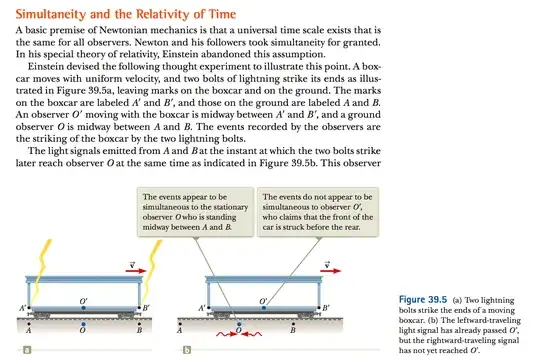The following thought experiment is often used to introduce Special Relativity:
The thought experiment fails to specify which reference frame establishes $\vec{v}$--the observer on earth or the observer in the boxcar.
Determining what $\vec{v}$ should be ( and according to whom ) becomes less trivial in the following example, where there are more than two reference frames and no $\vec{v}$ is given:
An alien spaceship traveling at 0.620 c toward the Earth launches a landing craft. The landing craft travels in the same direction with a speed of 0.790 c relative to the mother ship (as measured by aliens on the mother ship). As measured on the Earth, the spaceship is 0.220 ly from the Earth when the landing craft is launched.
What speed do the Earth-based observers measure for the approaching landing craft?
Solving for $\vec{u}$ according to observers on earth, we use the Lorentz Velocity Transform:
$ \LARGE{ u_x^{'} = \frac{u_x - v}{1 - \frac{vu_x}{c^2}} = 0.946\ c } $
and we use -0.550 c ( the velocity of earth approaching the mothership as observed by aliens on the mothership )--but why? Because the mothership said so, of course.
But, the mothership is traveling at relativistic speeds, so their clocks are subject to time dilation, time is a component of velocity and therefore, one would think, observations of velocity made by the mothership are skewed by time dilation, and the contraction of space.
Suppose we wanted to answer the following question:
What speed do the Earth-based observers measure for the approaching mothership?
How do we determine $\vec{v}$ then?
